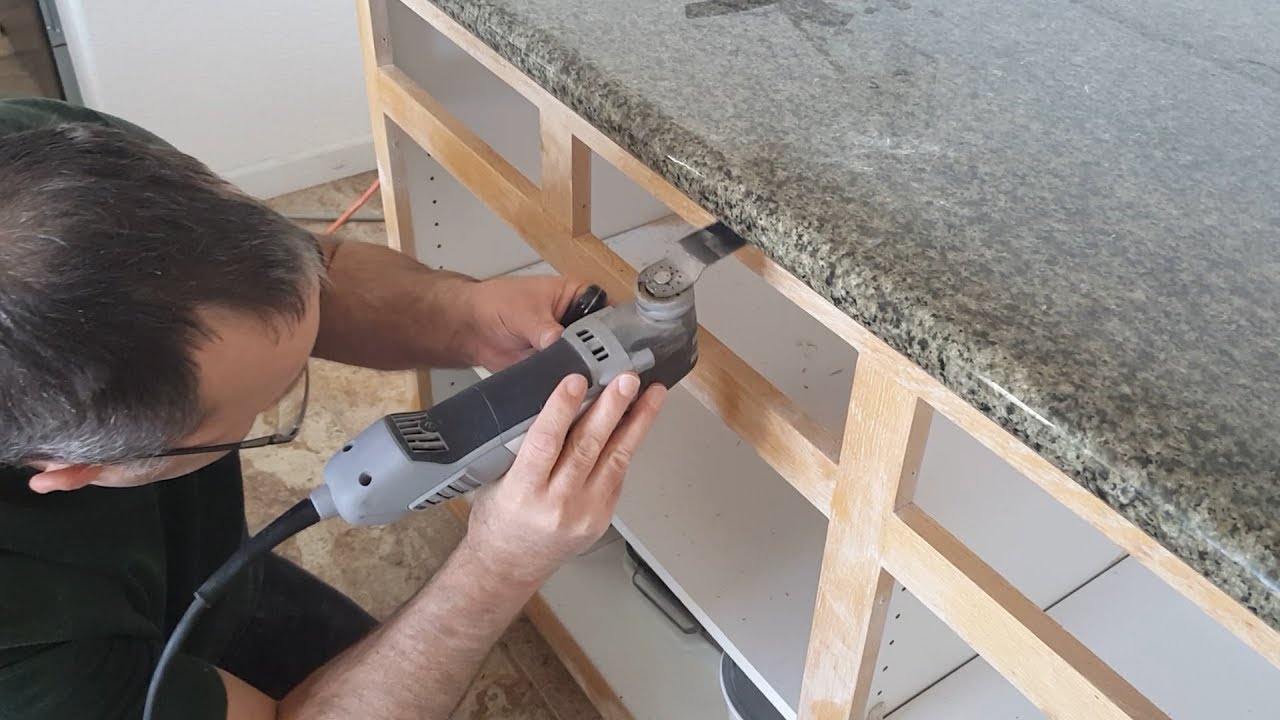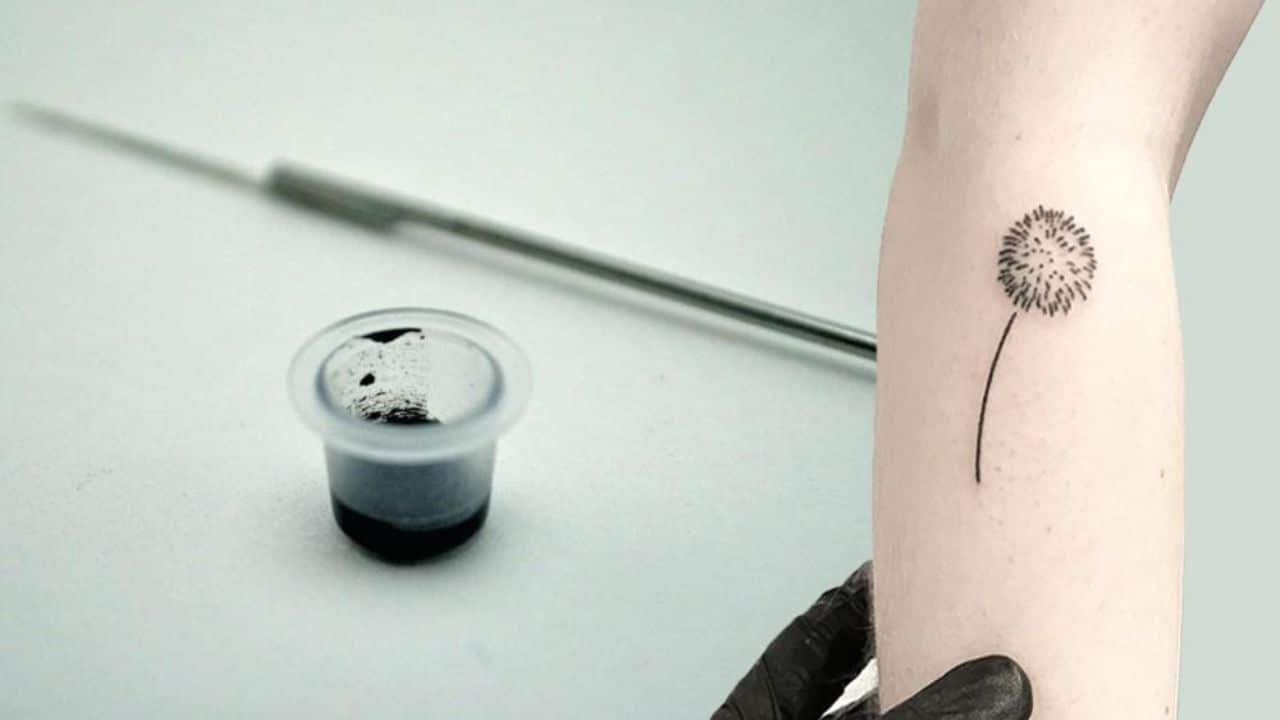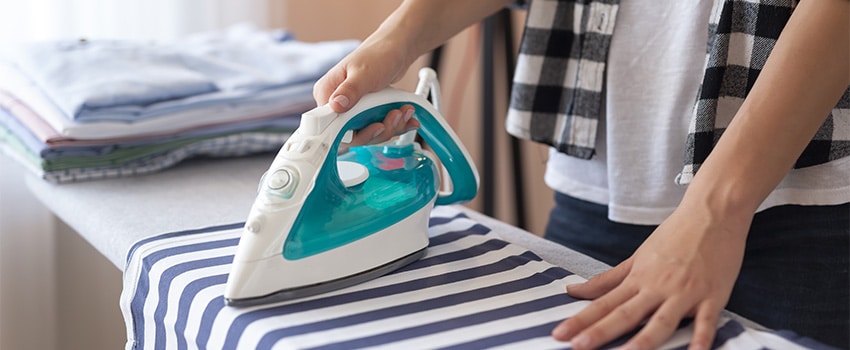Granite countertops are renowned for their beauty and durability, making them a popular choice in kitchens and bathrooms. However, there comes a time when you might need to remove them, whether it’s for a renovation, repair, or replacement.
The challenge? Granite countertops are often securely glued in place. In this comprehensive guide, we’ll explore the step-by-step process of how to remove granite countertops that are glued down.
We’ll cover the tools you’ll need, safety precautions to take, and everything in between to ensure you can tackle this project with confidence.
Let’s dive right in!
Table of contents
- How to Remove Granite Countertops That are Glued Down?
- Tools and Materials You’ll Need:
- Step 1: Safety First
- Step 2: Clear the Area
- Step 3: Start with the Backsplash (if applicable)
- Step 4: Loosen the Countertop
- Step 5: Heat to Soften the Adhesive
- Step 6: Continue to Pry and Lift
- Step 7: Remove Any Remaining Adhesive
- Step 8: Clean and Prepare for Reinstallation (if necessary)
- Tips:
- Is it possible to reuse the granite countertops after removal?
- Can I do this as a DIY project, or should I hire a professional?
- Conclusion
- Frequently Asked Questions
- References
- Recommendations
How to Remove Granite Countertops That are Glued Down?
Removing granite countertops that are glued down is a meticulous process that requires patience and the right tools. Follow these step-by-step instructions to safely and effectively remove glued granite countertops:
Tools and Materials You’ll Need:
- Pry bar
- Utility knife
- Putty knife
- Rubber mallet
- Heat gun or hairdryer
- Safety goggles
- Gloves
- Drop cloth
- Adhesive solvent (if necessary)
Step 1: Safety First
Before you begin, put on safety goggles and gloves to protect your eyes and hands. Ensure the workspace is well-ventilated.
Step 2: Clear the Area
Remove any items from the countertops and clear the area around them. Lay a drop cloth on the floor to catch any debris and protect it.
Step 3: Start with the Backsplash (if applicable)
If your granite countertop has a backsplash, begin by carefully using a utility knife to cut through the caulking between the backsplash and the wall. Gently pry it away from the wall using the putty knife.
You should read: How Big is 5 Inches? 6 Items with Accurate Measurement
Step 4: Loosen the Countertop
Insert a pry bar between the granite countertop and the cabinet, starting from one corner. Use the rubber mallet to tap the pry bar gently to create separation. Be patient and work your way along the entire edge.
Step 5: Heat to Soften the Adhesive
If you encounter resistance, use a heat gun or hairdryer to warm the adhesive. This makes it more pliable and easier to remove. Keep the heat source a few inches away from the granite surface, and work in sections.
Step 6: Continue to Pry and Lift
As the adhesive softens, continue using the pry bar to lift the granite countertop slowly. Work your way around the entire countertop, being cautious not to force it, which can lead to chipping or cracking.
Step 7: Remove Any Remaining Adhesive
Once the countertop is lifted, you may find adhesive residue on the cabinet’s surface. Use a putty knife to carefully scrape off any remaining adhesive. Be gentle to avoid damaging the cabinets.
Check out this related content: Is 75 Degrees Really Hot? (Explained)
Step 8: Clean and Prepare for Reinstallation (if necessary)
If you plan to reuse the granite countertop, clean it thoroughly with a granite-safe cleaner. Ensure the cabinet surface is clean and free from adhesive residue.
Tips:
It’s a good idea to have an extra pair of hands to help lift the countertop, especially if it’s large and heavy.
If you encounter stubborn adhesive that doesn’t soften easily, consider using an adhesive solvent. Follow the manufacturer’s instructions for safe use.
Remember that removing granite countertops is a meticulous process, and there is a risk of damage, especially if the countertops are not handled with care. If you’re uncertain about your DIY skills or concerned about potential damage, consider hiring a professional to ensure a safe and successful removal process.
Is it possible to reuse the granite countertops after removal?
Yes, it is possible to reuse granite countertops after you remove them, but there are some important considerations to keep in mind:
- Condition of the Granite: Examine the granite countertop carefully for any damage, such as cracks or chips, during the removal process. If the countertop is in good condition and does not have significant damage, you can potentially reuse it.
- Support and Alignment: Reinstalling granite countertops requires proper support and alignment to ensure they fit correctly and securely. This process is best for a professional installer who can ensure the countertops are level and well-supported.
- Caulking and Sealing: When reinstalling granite countertops, it’s important to apply new caulking and sealant to ensure a watertight and secure fit.
- Safety: Granite countertops can be heavy and cumbersome. When removing or reinstalling them, it’s essential to take proper safety precautions and have the necessary equipment and assistance to avoid injury.
While it’s possible to reuse granite countertops, it’s generally best to have a professional handle the removal, transportation, and reinstallation to ensure the best results. A professional installer can also assess the condition of the countertop and make any necessary repairs or adjustments to ensure a proper fit in its new location.
Check out this related content: What Does GMS Mean on Snapchat?
Can I do this as a DIY project, or should I hire a professional?
Removing granite countertops that are glued down can be a challenging DIY project. Whether you should attempt it yourself or hire a professional depends on your level of experience, the tools you have, and your comfort with home improvement tasks. Here are some factors to consider:
DIY Project:
- Experience: If you have experience with DIY home improvement projects and feel confident in your abilities, you can attempt to remove granite countertops yourself.
- Tools: Ensure you have the necessary tools, including a pry bar, utility knife, putty knife, rubber mallet, heat gun or hairdryer, safety goggles, gloves, and a drop cloth.
- Safety: Always prioritize safety. Wear protective gear, and take necessary precautions to avoid injury.
Professional Hire:
- Lack of Experience: If you have limited experience with home improvement tasks or feel unsure about the process, it’s advisable to hire a professional. Removing granite countertops requires care and precision to prevent damage.
- Heavy Countertops: Large or very heavy countertops are best for professionals who have the right equipment and experience.
- Cabinet Protection: Professionals have skills to protect the cabinets during removal, reducing the risk of damage.
- Reinstallation: If you plan to reuse the granite countertops, it’s highly important to hire a professional for the reinstallation. Proper support and alignment are crucial to ensure the countertops fit securely.
- Safety Concerns: Professionals manage the safety risks associated with heavy materials, such as granite countertops.
When in doubt, it’s usually safer to hire a professional, especially if you intend to reuse the countertops or if the job involves heavy or large pieces of granite. Professional installers have the expertise to complete the task with precision and safety.
Also check out this content: 26 Legitimate Ways to Get a Costco Student Membership for Free
Conclusion
Removing granite countertops that are securely glued down is a task that, with the right tools and precautions, you can tackle as a DIY project. By following the steps outlined in this guide and taking necessary safety measures, you can successfully remove your countertops without causing damage to your cabinets or injuring yourself. Whether you’re renovating your space or preparing for new countertops, this DIY project can be a rewarding experience when done with care and precision.
You should read: What Age Do You Graduate High School?
Frequently Asked Questions
There are various reasons to remove granite countertops, including remodeling your kitchen or bathroom, repairing damage, or replacing them with new countertops. Removing them properly is crucial to avoid damaging the cabinets or causing injuries during the process.
You’ll need a pry bar, a utility knife, a putty knife, a rubber mallet, a heat gun or hairdryer, safety goggles, gloves, and a drop cloth. Additionally, you may require adhesive solvent to help dissolve the glue securing the granite.
To safeguard the cabinets, use a pry bar and a rubber mallet gently. Start by inserting the pry bar between the granite and the cabinet and tap it lightly with the mallet. This will gradually loosen the countertop without causing damage.
You can remove granite countertops as a DIY project if you have the necessary tools and are comfortable with basic renovation tasks. However, if you’re unsure or concerned about damaging the countertops or cabinets, it’s advisable to hire a professional to ensure a safe and efficient removal process.
References
- rocksolidcustomgranite.com– how to remove granite countertops that are glued down.
- graniteproremodeling.com– how to remove granite countertops that are glued down
- caesarstoneus.com– How to remove old granite countertops
Recommendations
- 26 Legitimate Ways to Get a Costco Student Membership for Free
- What Age Do You Graduate High School?
- Which Group is a Primary Supporter of Hunter Education?
- How Tall is Trippie Redd? Everything About the Rapper
- How Tall is Jack Skellington? All the Facts and Details
- How Big is 5 Inches? 6 Items with Accurate Measurement






